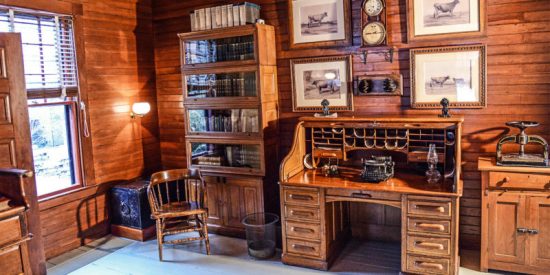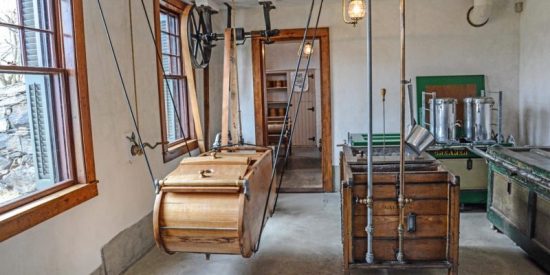![]()
The 1890 Farm Manager’s House was built with multiple purposes in mind to support Billings Farm’s expanding agricultural operations. Meticulously restored to its 19th century heyday, the farm house contains a business office for then farm manager, George Aitken, a private living space for his family, a creamery for the production of butter, and an adjoining ice house. Visitors can also explore the Farmstead Gardens and apple orchard, located just outside the farmhouse.
Considered state-of-the-art when built in 1890, the farmhouse has features quite uncommon for the time. These include cutting-edge creamery equipment, as well as conveniences such as hot running water, central heat, gas lighting, and an indoor bathroom.
The 1890 Farm Manager’s House exemplifies Billings Farm’s role as a model dairy operation and Frederick Billings’ determination to apply progressive solutions to practical agricultural problems of the times. Visitors will be greeted by interpreters who take you back in time, answering questions about the house and its occupants. Self-guided tours based on varied themes are also available. Depending on the time of year, there are programs featuring 1890’s artifacts and pastimes, cooking demonstrations and tastings, children’s book readings and more.
Be sure to check our daily schedule for more information on what’s happening the day of your visit.





